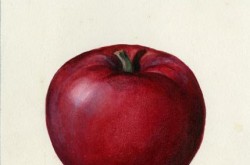Hawker Hurricane
This article was originally written and submitted as part of a Canada 150 Project, the Innovation Storybook, to crowdsource stories of Canadian innovation with partners across Canada. The content has since been migrated to Ingenium’s Channel, a digital hub featuring curated content related to science, technology and innovation.
The Hawker Hurricane gained fame for its role in defeating the German air force during the Battle of Britain in 1940. Robust and rugged, the Hurricane was a single-seat monoplane launched in 1935. It was an aircraft of technological firsts: it was the first Royal Air Force (RAF) monoplane to feature an enclosed canopy and retractable landing gear. The heavily-armed Hurricane was also fast and became the first RAF aircraft to fly over 485 km/h in level flight. Admired for its ability to operate in a variety of tough environments, the Hurricane was deployed in Europe, Africa, and Asia. Canada played an important role in wartime Hurricane production. More than 1,400 Hurricanes were built in Fort William, Ontario, between 1940 and 1943 under the supervision of Elizabeth “Elsie” MacGill, the first female aeronautical engineer in the world. Canadian pilots, fighting in both the RAF and the Royal Canadian Air Force, flew the aircraft in thousands of battle sorties.
The Canadian Car and Foundry factory in Fort William, Ontario, produced more than 1,400 Hurricanes under Elsie MacGill’s close supervision.




















![A block of photographs showing some of the people involved in the bombing of beluga whales in the estuary and gulf of the St. Lawrence River. Anon., “La chasse aux marsouins [sic]. » Le Devoir, 15 August 1929, 6.](/sites/default/files/styles/thumbnail_7/public/2024-09/Le%20Devoir%2015%20aout%201929%20page%206.jpg?h=584f1d27&itok=TppdLItg)






